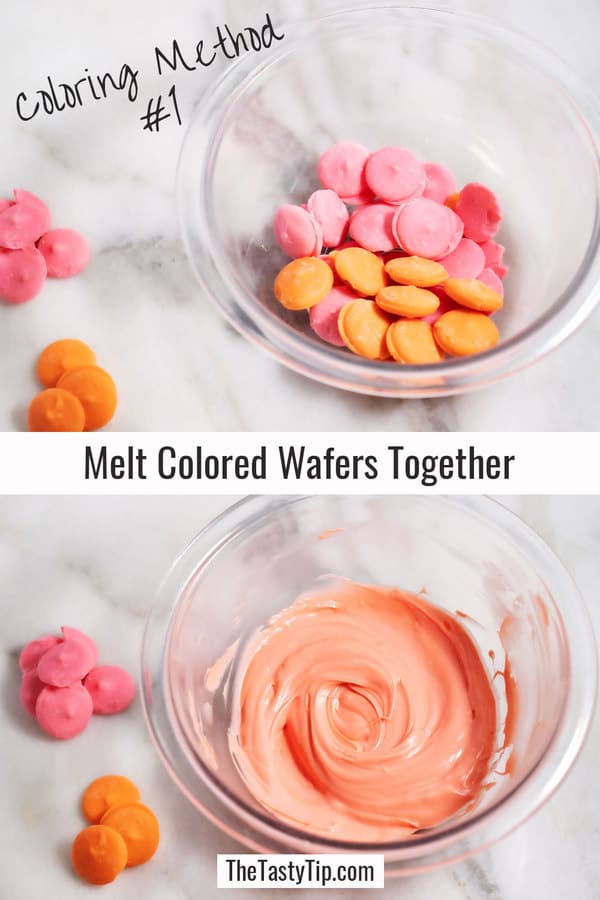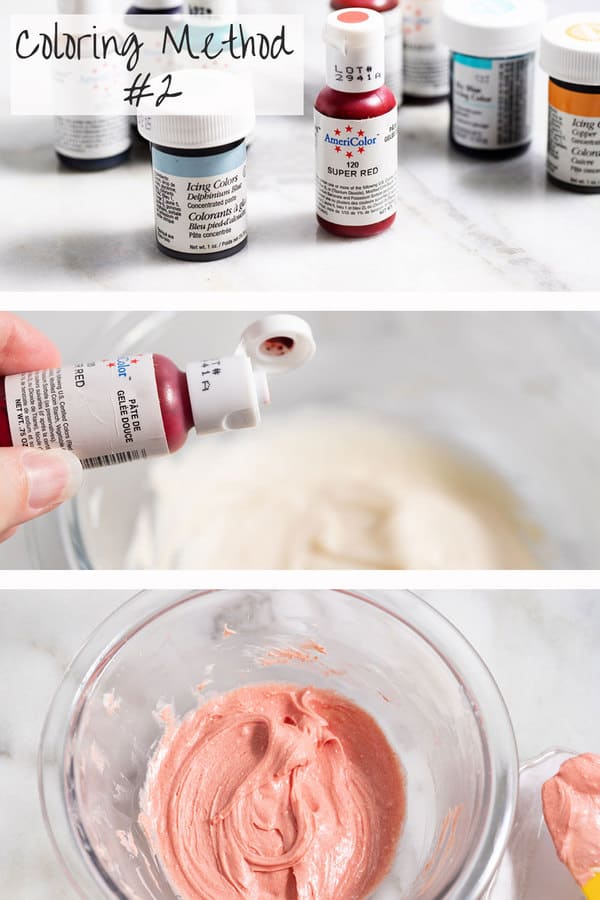Now that you have the ins and outs of how to make modeling chocolate (MC), let’s take a look at how to select the right product to make your MC out of. Everyone has different needs, and budgets and availability so my goal is to explain my observations without deeming one product superior. That way you can make the best choice for you!
For simplification I am going to analyze white chocolates and candy coatings at this time but understand that darker chocolates will also follow suit. The observations noted will include composition, price, color, ease to make, ease to fix, texture, and taste and mouthfeel.
I tried to sample a variety of media (without going too crazy) that are widely available and you might be likely to use. They include Wilton candy melts, Ghiradelli baking chips, Wilton white chocolate, Ghiradelli baking bar and Callebaut callets (28% cocoa butter).
1. Composition. The greatest divide between theses products comes in their fat composition. Both candy coating and white chocolate contain sugar, milk powder, lecithin and vanilla, but white chocolate uses cocoa butter for its fat while coatings and chips use palm oil. The palm oil is hydrogenated to make more solid at room temperature and more like cocoa butter. Above left is palm oil that is non-hydrogenated and remains creamy. It is likely that palm oil used in candy melts is more like the cocoa butter on the left. Cocoa butter is so solid at room temperature that it flakes rather than scoops.
2. Color. One of the most considerable factors in choosing a MC medium is color. Because cocoa butter is golden colored (see above) it imparts a pale yellow hue to white chocolate and the MC made from it. If you are looking for a natural color or a planning to tint your modeling chocolate a warm tone this is not a problem, but it can easily muddy and mute cool tones. Also, if you need a bright white it will have to be adjusted with white food coloring.
Palm oil on the other hand is white and produces a modeling chocolate in a tone that is easier to manipulate. Moreover, candy melts and coatings come in a wide variety of colors which means they don’t require time to tint or money to invest in coloring products.
3. Money. Cost is also an important consideration when choosing a product. Here is a list of approximate cost per ounce of the product that I used.
4. Resistance to failure. Due to the fact that coatings and melts contain palm oil which has a higher melting temperature than cocoa butter it is less likely to break and leach fat than white chocolate it. Palm oil is also softer at room temperature than cocoa butter is so it is easier to work in fat that has leached out from the chocolate. For this reason candy melts are less likely to “fail” when mixed than white chocolate is.
5. Fixability. Maybe correctable is the appropriate word?? Either way, for the same reasons that palm oil products are resistant to failure they are more difficult to correct. A broken MC made from white chocolate is easier to work back into a smooth product because of the fact that cocoa butter has a lower melting temperature than hydrogenated palm oil.
6. Texture. Here is where we start comparing the actual MC product side by side. Above I have tried to give you a picture that indicates what the textures are like but in truth the differences are extremely subtle and can only be felt in hand (that is except for the white baking chips). Here are their properties.
7. Taste and mouthfeel. Not surprising, a modeling chocolate tastes like the product it is made from so it comes down to a matter of preference. I, in a shameful sort of way, liked the Wilton white chocolate. It was pleasant and simple and was not nearly as sweet as the Ghiradelli baking bar, which was so sweet that it sort of hurt my brain. Callebaut tasted more like cocoa butter but in a pungent way that was not for my taste buds. The candy coating and chips tasted sweet and vanilla-y. They were not unpleasant just lacking cocoa butter flavor; more neutral perhaps. This you will have to taste for yourself and decide.
Where candy melt MC was silky by feel, white chocolate MC is silky on the tongue. The lower melting temperature of cocoa butter allows the white chocolate MC to dissolve creamily in the mouth. The candy melts and chips were slightly gritty like small sugar crystals remained present. Again, these differences were barely perceptible but still there nonetheless.
So there you have it! All sorts of things to consider when choosing what to make your modeling chocolate from. I hope this helps your decision making process and you can move forward into modeling chocolate wonderfulness!
My next post will describe 15 (or more!) ways to color modeling chocolate. I know you can hardly believe it so stay tuned! Hugs!
Confused about which candy melt to use for your cake pops? I did a Melting Candy Wafers Test to see which brand would melt the smoothest.
Pros: Of these three, I thought this had the best dipping consistency and was the easiest to work with.
So… a while back I was going to do this big test of 5 different candy melts and a bunch of cake pops and see if it was the candy itself that led to cracking pops. It was an ambitious goal that I failed at… It was just too much to do. Too many supplies, too many pops, too many variables. Sorry.
Using a 1000 watt microwave, I started off with 45 seconds at 70% power for each bowl of candy.
What I did instead is melted 3 popular candy melts and judged the melting consistency and temperatures. This is not rocket science, but there were some parameters.
4. Resistance to failure. Due to the fact that coatings and melts contain palm oil which has a higher melting temperature than cocoa butter it is less likely to break and leach fat than white chocolate it. Palm oil is also softer at room temperature than cocoa butter is so it is easier to work in fat that has leached out from the chocolate. For this reason candy melts are less likely to “fail” when mixed than white chocolate is.
For simplification I am going to analyze white chocolates and candy coatings at this time but understand that darker chocolates will also follow suit. The observations noted will include composition, price, color, ease to make, ease to fix, texture, and taste and mouthfeel.
3. Money. Cost is also an important consideration when choosing a product. Here is a list of approximate cost per ounce of the product that I used.
5. Fixability. Maybe correctable is the appropriate word?? Either way, for the same reasons that palm oil products are resistant to failure they are more difficult to correct. A broken MC made from white chocolate is easier to work back into a smooth product because of the fact that cocoa butter has a lower melting temperature than hydrogenated palm oil.
7. Taste and mouthfeel. Not surprising, a modeling chocolate tastes like the product it is made from so it comes down to a matter of preference. I, in a shameful sort of way, liked the Wilton white chocolate. It was pleasant and simple and was not nearly as sweet as the Ghiradelli baking bar, which was so sweet that it sort of hurt my brain. Callebaut tasted more like cocoa butter but in a pungent way that was not for my taste buds. The candy coating and chips tasted sweet and vanilla-y. They were not unpleasant just lacking cocoa butter flavor; more neutral perhaps. This you will have to taste for yourself and decide.
Method Candy Melt Color Combinations
Melt two or more colors of candy melts together to make a new color.
Remember learning about colors in kindergarten? Red and blue make purple. Yellow and blue make green. This is the same concept.

Easy Directions:
Tips:
Color candy melts with oil-based food coloring.
Do not use water-based food coloring or the candy melts will seize and be ruined. Seized candy melts get lumpy, hard, and grainy. Heating the candy melts again just makes it worse.

Easy Directions:
FAQ
Are molding wafers the same as candy melts?
Can you melt molding wafers?
Is molding chocolate the same as melting chocolate?
